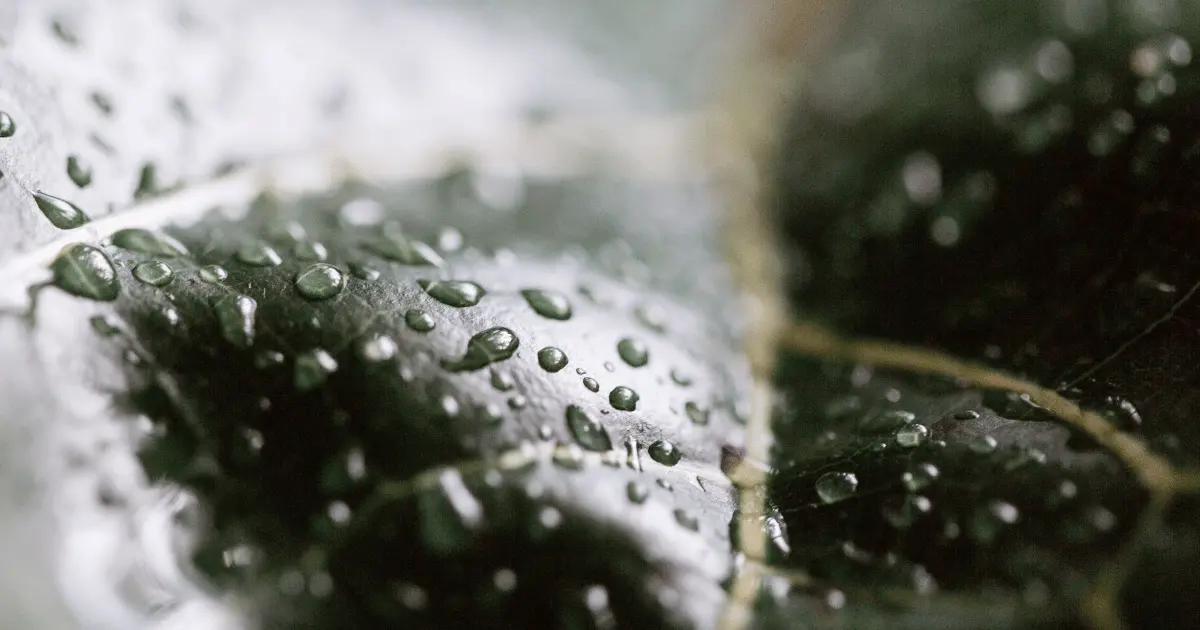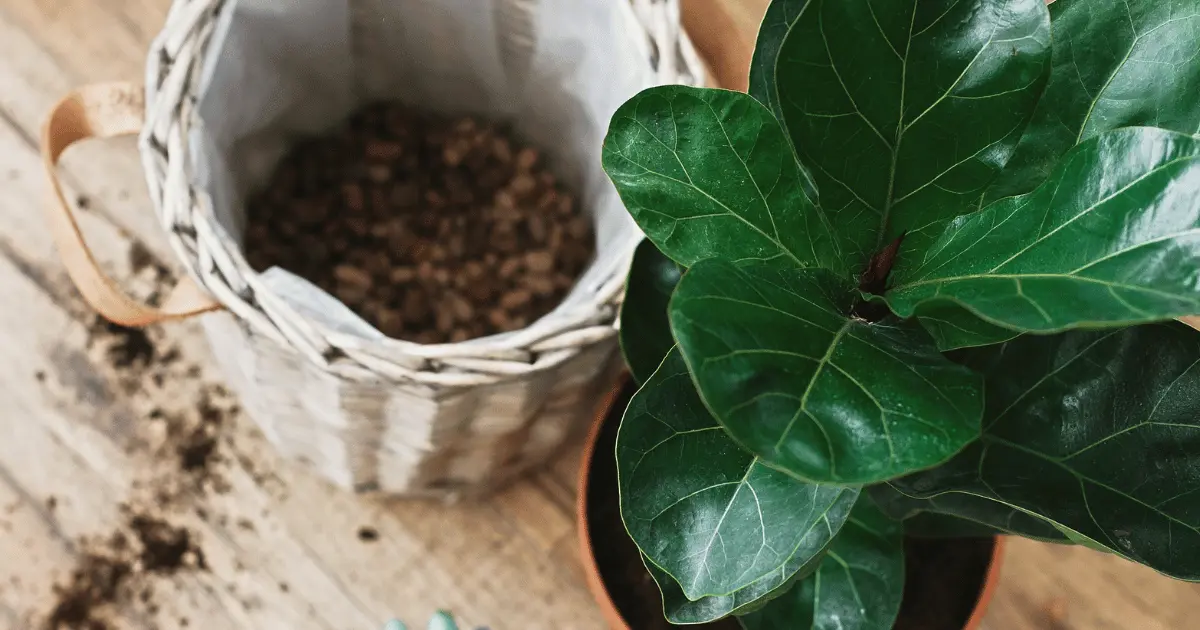The fiddle leaf fig, a popular houseplant in recent years, looks stunning and adds architectural interest to any area in my home. Fiddle leaf figs can grow at least 6 feet tall. If you want a distinct look, there are also various plant cultivars, such as “Suncoast” and “Compacta. These don’t grow as tall and are bushier.
Although this plant is beautiful with shiny, violin-shaped leaves, it can be challenging to groom. But don’t fret! I have the advice to assist you in maintaining it and making it thrive in your environment, just as I did with mine.
How Often To Water Fiddle Leaf Fig

The best thing you to do for your plant’s health is to water regularly and never let it become so dry that the soil starts to shrink and peel away from the pot’s sides. Soil shrinkage is a big issue because the next time you water, the water runs down the sides of the pot and between the soil and the pot, missing the plant’s roots entirely. Your plant can perish due to the vicious cycle of inconsistent watering (which alternates between over- and under-watering).
The good news is that your fiddle leaf fig plant only needs to be watered once per week, a failsafe method for watering it in just the proper quantity. Make sure to water your plant at most once every week by setting a calendar reminder. Your plant will become accustomed to the environment and thrive if you maintain your once-weekly routine.
The benefit of watering your plant once a week is that you’ll have the assurance that you’re not overwatering or underwatering it. You are no longer required to worry or second-guess yourself. Of course, if your plant doesn’t have adequate drainage, this schedule will not work. Ensure that your plant is potted correctly and that each watering thoroughly drains the pot.
Before watering, ensure that the bottom of the pot is dry by sticking a wooden skewer there. A moisture meter is quite helpful in this situation. If the soil is still wet a week after your last watering, your drainage has to be improved immediately. Your plant may require re-potting.
How Much Water To Give My Fiddle Leaf Fig
To adequately water your plant, you don’t need to deluge it. Water your plant in the same quantity each week to keep things easy.
One cup of water should be applied weekly to plants less than 2 feet tall from the soil to the topmost foliage. Water plants with 2 cups of water once a week if they are more elevated than 2 feet. Use 3 cups of water if your plant is between 3 and 6 feet tall. Taller than 6 feet? Water your container with 4 cups weekly or until the water runs out. Never allow your plant to soak in water; each time you water, ensure the container drains completely.
When And How To Re-pot

You can re-pot every one to two years or as soon as your plant appears too large for its container or the roots begin to protrude through the drainage holes. Select a pot about two inches wider than the original pot with a few drainage holes. Stones should be piled two to three inches deep in the new pot’s bottom. It promotes vital humidity while allowing plant drainage and preventing decay.
It would be best to fill the new pot with moisture-regulating, well-draining potting soil. Push the soil to the edges to make room for the root ball in the center. Cut out discolored, rotting roots and remove the root ball from the old pot. Gently loosen the root ball, then set it in the earth’s crater. Add more dirt, ensuring an inch between the soil and the container lip, and then water as usual.
Overwatering and Underwatering Fiddle Leaf Fig
Do your fiddle’s leaves resemble a brown and green Dalmatian? Most likely, you overwatered the plant. Root rot might develop when there is insufficient drainage or time between waterings. Dormant pathogens in the soil flourish when water lingers in the soil for a long time, feasting on the roots of the plant. Pathogens starve; your plant survives when you let the soil dry out between waterings.
Observing where the brown patches are is an approach to determining if your plant is underwatered. On a dry Fiddle, brown spots appear on the leaf’s periphery rather than the center, close to the veins. In contrast to root rot, which first affects the bottom leaves, the dark patches affect the entire plant from top to bottom. Your fiddle’s leaves curling inwards is a sign of severe underwatering.
Grooming Tips for Fiddle Leaf Fig
Your plant may be shocked while traveling home and moving, but you probably won’t notice it for a month or two. After the first month:
- Ensure you haven’t overwatered the plant if the leaves look brown.
- Ensure that the plant is receiving enough sunlight.
- If neither is the problem, give your fiddle leaf fig some time and affection so it gets used to its new surroundings.
- Leaf Cleaning: Use a moist washcloth to gently wipe down each leaf on your new plant if it has dust and watermarks on its leaves. As you may have heard, there is no need to use coconut oil because doing so will eventually suffocate the leaves. To keep spider mites and other pests away and your fiddle looking its shiny-leaf best, dust the leaves in this manner once a month.
- Fertilization: Fertilize once a month with a fertilizer with a 3:1:2 ratio of nitrogen-phosphorus-potassium (NPK for short) if you purchased your fiddle in the spring or summer. Follow the directions on the fertilizer’s container to add it to your watering can, then water as usual in the spring and summer. During fall and winter, when the plant is dormant, there is no need to fertilize.
- Humidity: Since they are from tropical rainforests, fiddle-leaf figs do well in warm, humid settings like greenhouses. Not a greenhouse dweller? No issue. Most homes have a humidity level of around 40%, which is good, but if your home is arid, spritz your plant once a week.
- Drainage Holes: Your plant should ideally be inside its container in its plastic nursery pot. You may move your plant and get the finest drainage this way. Make sure the container includes a drainage hole if you only want your plant to be in a decorative one.
- Musty Plant Odour: Verify that your plant’s attractive container doesn’t have a water-filled basin. It can attract insects in addition to causing fungal illnesses.
- Positioning Your Fiddle: Put your fiddle in the best location possible in your house to get it started to the best possible start. Choose a place away from an external door, a drafty window, or next to an air vent because these tropical plants abhor drafts. They also do well in lots of bright, indirect light. Place it near a window or in a well-lit area, but keep it away from direct sunlight. Please only move it once you have found the ideal location.
